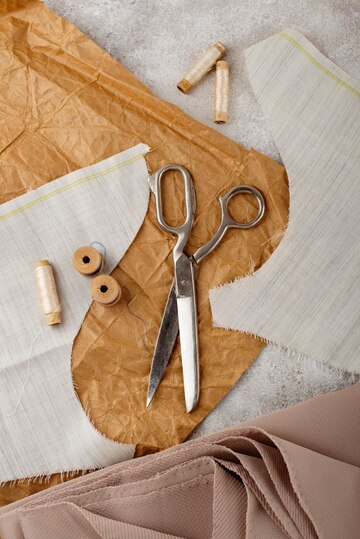Mend Your Clothes Without a Stitch: The No-Sew Hole Fixing Guide!

Don’t fret when a hole appears in your favorite clothing items. You don’t need to be an expert seamstress to save them! In fact, this method is perfect for small holes because it avoids the risk of noticeable stitches. With a little practice, you can fix these pesky pinpricks in just a few minutes.
What Causes Holes in Clothing?
Moths often get the blame for those tiny holes, but they’re not the only culprits. Regular wear and tear, as well as snags from everyday items and accessories, can also cause these annoying holes. Here are some common causes:
Zippers
Bras
Belts
Your washing machine
Chlorine bleach
Snags on rough surfaces
Tips to Prevent Holes
The location of the holes might give you a clue about what’s causing them. For example, if you notice holes at the bottom of your shirts, it could be due to belt buckles rubbing against the fabric. To prevent this, try skipping the belt, regularly change its position, or use sandpaper to smooth any rough edges.
If you tuck your shirts into jeans, the zipper can be responsible for holes. Zippers can also damage clothing in the washing machine. To prevent this, make sure to zip up your jeans, hoodies, and any other garments before washing them. It’s also a good idea to close bras before washing to avoid metal clasps snagging onto other clothing. Alternatively, you can use a washing bag to keep bras separate, especially if they tend to unclasp.
When using a washing machine, avoid overloading it, as this increases the chances of snags. Be sure to turn items with beads, buttons, or other decorations inside out before washing. Additionally, keep delicate materials like cotton and silk separate from sturdy pieces like sheets and towels. For delicate items, use a low spin cycle.
Be cautious with chlorine bleach, as using too much or using it incorrectly can cause holes in clothing. Consider using environmentally friendly alternatives like vinegar, citric acid, or baking soda.
Moths are notorious for causing holes, especially in animal materials like wool, silk, and leather. However, moths can also damage other fabrics. To combat male moths, you can use pheromone traps. To repel moths in general, you can place dried lavender in mesh bags or use essential oils like mint or lavender. If you’re dealing with a severe infestation, wash your clothes in warm water and clean your closet with vinegar.
Finally, be mindful of rough surfaces like brick, exposed nails, wood, and stone. Bumping or rubbing against these surfaces can cause snags and holes. Consider smoothing or covering these surfaces to protect your clothing from accidental tearing.
How to Repair Clothes Without Sewing
Before you get started, gather the following items:
Clothes with holes measuring 5 mm or less
An Iron
Fusible bonding web
A large piece of wax paper
Follow these simple directions:
Turn the damaged article of clothing inside out and place it on the ironing board, with the hole facing outwards.
Cut a small piece of fusible bonding web, slightly larger than the hole you’re trying to repair.
Gently push both sides of the hole together, making it look like the hole has disappeared. Place the fusible bonding web over the hole, and then place the wax paper over the same spot. Fusible bonding web can be found at Walmart, fabric or craft stores, and even on Amazon.
Set your iron to the “wool” setting and place it on top of the wax paper. Do not move or press the iron for about 10 seconds. Remove the iron carefully.
Finally, turn the clothing right-side-in to examine the hole. If it hasn’t closed smoothly, use your fingers to close the hole as you did in step two. Repeat steps three and four with the iron until the clothing looks good as new. It may take a few attempts to master the method, but you’ll immediately notice that the hole is no longer visible.
ALSO READ
Now you can confidently repair those annoying clothing holes without the need for sewing! Check out the video below for a visual demonstration on how to fix holes using this method